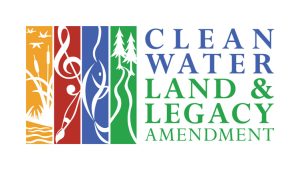
Minnesota Plumbing Board Issues Water Conditioning Licensing Clarification for Single-Family Homes
The Plumbing Board heard MWQA’s Request For Interpretation on April 16 regarding water conditioning scope of work, after MWQA submitted the RFI earlier this year. As the Department has explained the issue, part of the confusion came from the 2017 introduction of commercial work, at which time the statute on commercial work was incorrectly applied to residential installations. MN 326B.50 states that “in a multi-family or nonresidential building. . . Water conditioning installation does not include a valve that allows isolation of the water conditioning installation.” This was interpreted as only plumbers being allowed to install commercial bypasses.
MWQA and the Department agree that language describing residential installations was dropped from Code when Minnesota went to the national UPC code in 2015. Prior to that, the Plumbing Code spoke of items needed in a full water conditioning installation, including, “cutting into a cold-water line,” “a bypass valve,” “hard water to any existing outlet,” “water to points not needing conditioned water,” “drain and overflow lines,” and “providing of an air gap.”
The Plumbing Board reversed part of the interpretation (available here), ruling in 2022 that integral bypasses do meet Code. But it was still felt by the Department of Labor and Industry that cutting plumbing, installing a bypass and connecting hard water to outside faucets are not allowed.
Two days after MWQA presented their RFI to the Plumbing Board, the Board and DOLI issued a ruling, which clarified water conditioning installation hookups. The ruling is available here.
Chloride Reduction Program for Non-Residential Softening Continues with MPCA
MWQA is working with Bolton & Menk and the Minnesota Pollution Control Agency to continue keeping waterways in several Minnesota communities clear of chloride contamination. Water softening is one source of chloride contaminating Minnesota’s freshwater ecosystems, especially those that are connected to wastewater treatment facilities. There’s no economical way to remove chloride from a community’s wastewater, so the best practice for these situations is limiting chloride use at the source.
Initially the program included the communities of Altura, Avon, and Medina. Commercial, industrial, or non-residential facilities that had a water softener could be eligible to optimize equipment and minimize chloride pollution! Commercial and industrial businesses in other Minnesota cities may now be eligible for free or reduced softening system optimizations through MWQA, as well as recommendations and assistance with improvements or replacements. Cost-share funding for qualifying chloride reduction opportunities is available through MPCA and the Clean Water Land & Legacy Amendment.
Additional communities now have similar programs. Among those are Marshall, Worthington, and Carver County.
Contact the MWQA if you are interested, or to find out if your community has such a program.
This project is made possible through funding from the Clean Water Land & Legacy Amendment administered by the Minnesota Pollution Control Agency.


Guide to Developing a Local Water Softener Rebate Program
The Minnesota Pollution Control Agency has a document available on their website that assists communities in establishing a softener optimization rebate program.
Softener optimization will not only save salt, it also helps reduce chlorides, which can be harmful to fish and other aquatic life. Although a large percentage of chlorides come from road salt that makes its way into rivers, streams and lakes, chlorides also come from water softener salt, which is discharged to the sanitary sewer and ends up at the treatment plant. Treatment plants are designed to remove solids and break down organic wastes, but chlorides cannot be removed by all treatment processes. Therefore, softeners must be adjusted, or optimized, to reach maximum salt efficiency.
Traditional time-clock softeners do not allow for adjustment based upon water usage. They regenerate on a schedule, whether water is used or not. Newer on-demand softeners regenerate only when needed, and can be optimized using settings based upon water hardness and additional properties of your water.
